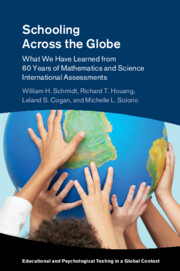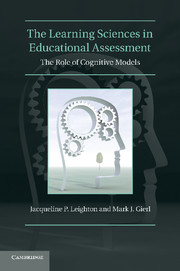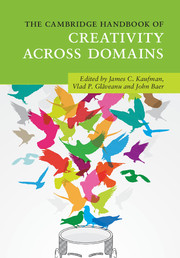Schooling Across the Globe
Schooling matters. The authors' professional pursuits for over twenty-five years have been focused on measuring one key aspect of schooling: the curriculum - what students are expected to study and what they spend their time studying. This documents their conviction that schools and schooling play a vital and defining role in what students know and are able to do with respect to mathematics and science. This research examines seventeen international studies of mathematics and science to provide a nuanced comparative education study. Whilst including multiple measures of students' family and home backgrounds, these studies measure the substance of the curriculum students study which has been shown to have a strong relationship with student performance. Such studies have demonstrated the interrelatedness of student background and curriculum. Student background influences their opportunities to learn and their achievements, yet their schooling can have even greater significance.
- Spans more than seventeen international studies over more than sixty years
- Presents an in-depth view of the evolution of the measurement of schooling and students' opportunities to learn
- Summarizes what has been learned as well as directions for the future
Reviews & endorsements
'This book argues convincingly that the essential determination of learning mathematics and science in school is through curriculum, the selection and implemented instruction of content and the consequent opportunities to learn. We cannot change the social and economic backgrounds of our students, but we can improve the quality and the fair distribution of their opportunities.' Richard G. Wolfe, Emeritus Professor, University of Toronto
'Compulsory reading for anyone engaged in improving education. Interest in TIMSS, PIRLS and PISA shows no sign of abating - but all too often it is the headline-grabbing 'league table of nations' which is the focus of attention. There is, of course, so much more to the surveys than this. If there's a definitive account which can improve understanding of how the surveys developed to where they are today, how they compare, and what the future holds, then this is it.' Tim Oates, CBE, Group Director of Assessment Research and Development, Cambridge Assessment
'International testing is an important driver of the rhetoric of educational reform. Schooling across the Globe is a great read for understanding the origins, objectives, and limitations of such assessments for school improvement.' Martin Carnoy, Stanford University Graduate School of Education, California
'I am mightily impressed with this book and am not surprised given the senior author. I learned a great deal and found the 'story' of the various math assessments fascinating. The authors have done a terrific job of explaining how these assessments came about and most especially what they mean. I am most grateful for the instruction the book provided.' Patricia Albjerg Graham, Charles Warren Professor of the History of American Education, Emerita, Harvard University, Massachusetts
Product details
May 2023Paperback
9781316621844
338 pages
228 × 151 × 18 mm
0.49kg
26 b/w illus. 33 tables
Not yet published - available from May 2025
Table of Contents
- Part I. The Historical Development of Modern International Comparative Assessments:
- 1. Beginning the modern investigation of the role of schooling across the globe
- 2. The arrival of TIMSS and PISA
- Part II. Conducting International Assessments in Mathematics and Science:
- 3. Who participates in international assessments?
- 4. What students know: from items to total scaled scores
- 5. Relating assessment to OTL: domain-sensitive testing
- 6. The evolution of the concept of opportunity to learn
- 7. The 1995 TIMSS curriculum analysis and beyond
- 8. Characterizing student home and family background
- Part III. The Lessons Learned from International Assessments of Mathematics and Science:
- 9. Pitfalls and challenges
- 10. What has been learned about the role of schooling: the interplay of SES, OTL, and performance
- 11. Where do we go from here?





